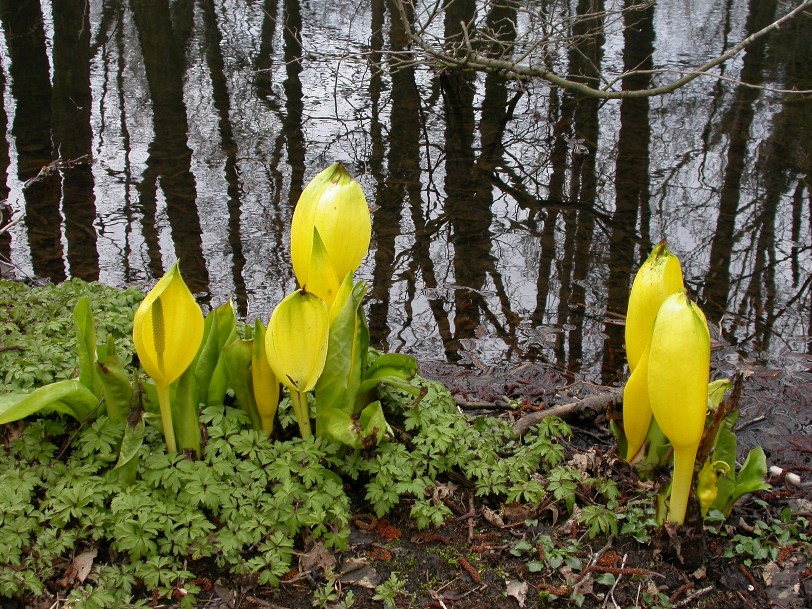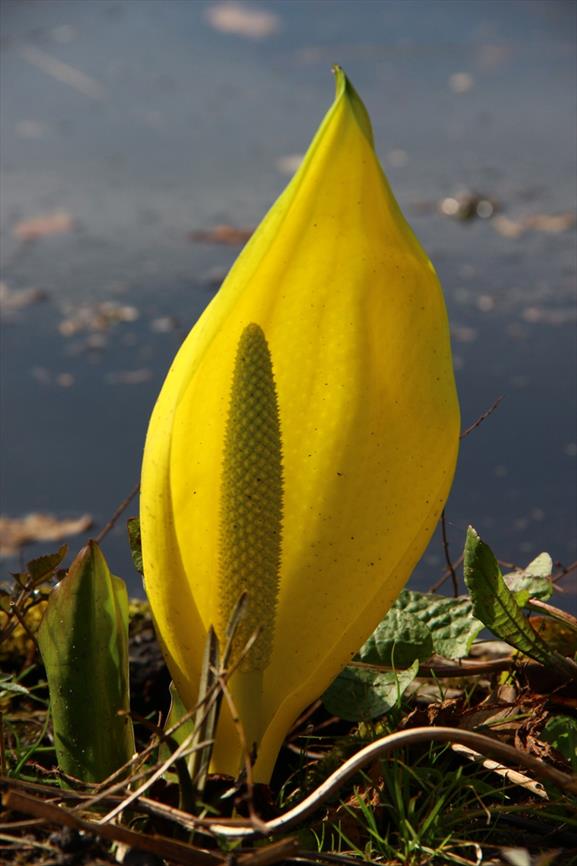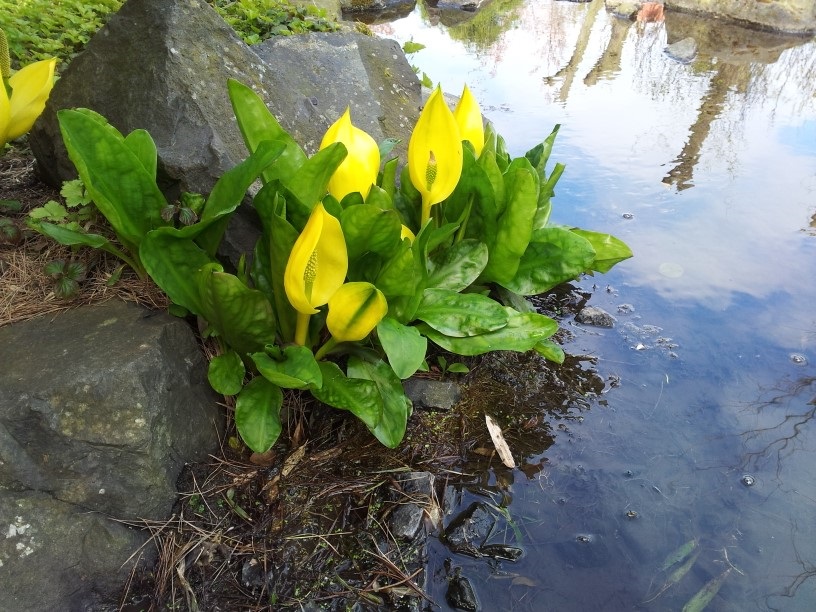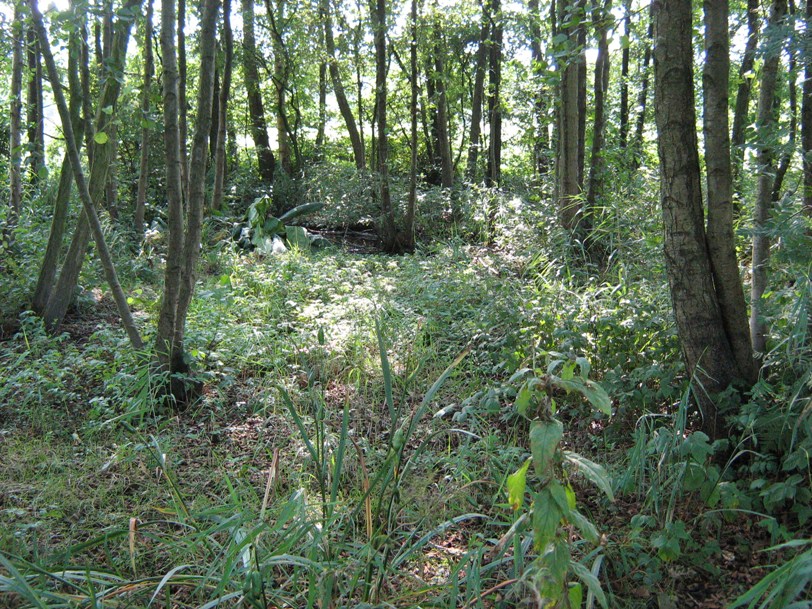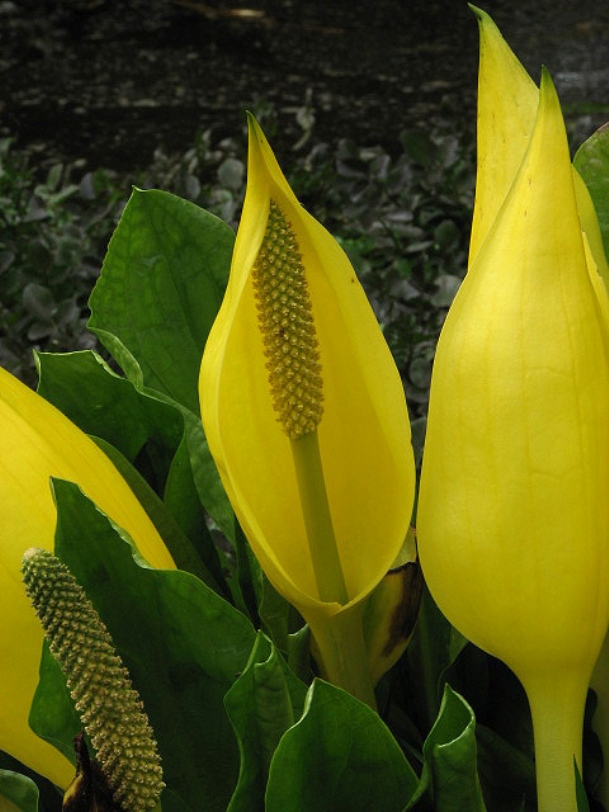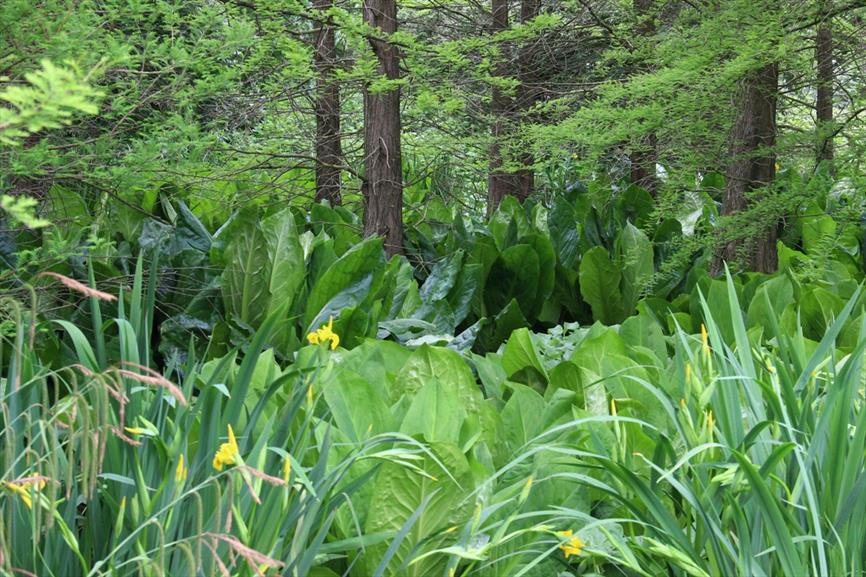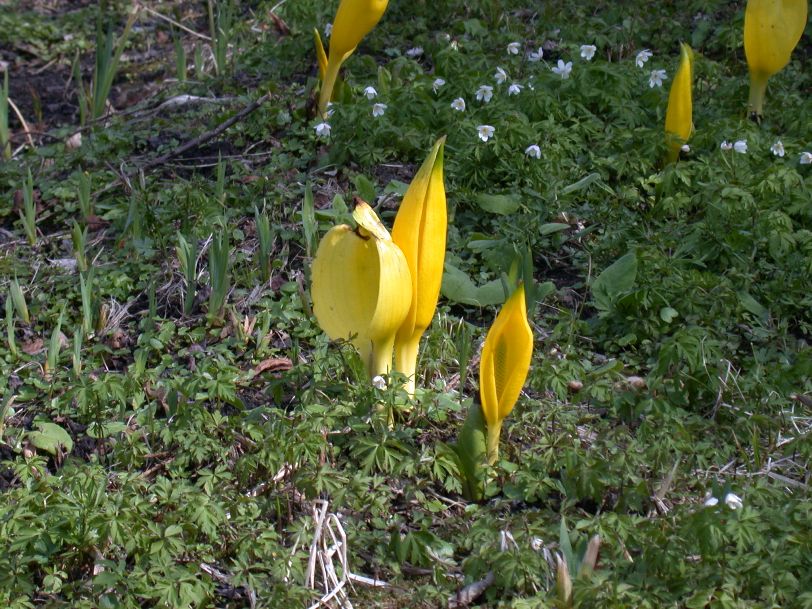American Skunk-cabbage
Lysichiton americanus
Arum family (Araceae)
The stink in the swamp
The Asian Skunk-cabbage (Lysichiton camtschatcensis) and the American Skunk-cabbage (Lysichiton americanus) are true marsh plants. The white species comes from Asia and the yellow species from North America where the plant is known as the skunk cabbage due to its cabbage-like leaves and its unpleasant (tar-like) smell.
The characteristic feature of the skunk cabbage is the large inflorescences, which appear in the early spring, and the huge leaves that develop after flowering. The inflorescence (one species with a white spathe and the other with a yellow spathe) emit the foul smell to attract pollinators - carrion flies and beetles.
In various regions of Europe the yellow skunk cabbage is becoming a bothersome weed. As a consequence is no longer allowed to trade this species on the open market.
Themes
Crown jewel in the Haren Botanic Garden and Utrecht Botanic Gardens.
These plants were traditionally used as a food source.
Was used as a medicine for burns and infections.
The leaves were, and are, used as packaging material for foodstuffs.
The plant is rich in calcium oxylate, this is toxic and if consumed makes the mouth and digestive tract feel as if they are being pricked by hundreds of needles. However, calcium oxylate is easily destroyed by thoroughly cooking or drying the plant.
Details
| Description: | Herb, leaves up to 1.5 m long. |
|---|---|
| Distributions: | Northwestern america |
| Habitat: | Swamps, wet forests, along streams and lakes |
| Year cycle: | Perennial (trees and shrubs included) |
| Hardiness: | Colder than -4 f (very hardy) |
| Flowering period: | Maart - april |
| Flower color: | Yellow |
| Notes on flowers: | Flowers arranged in a spadix, bisexual, surrounded by a yellow spathe; flowers emit a foul odour. |
| Fruiting period: | Juni - juli |
| Fruit color: | Green, grey, red, cerise, brown |
| Notes on fruits: | Green berries, containing 2-4 red-brown to grey-brown seeds. |
| At its best: | April - mei |
